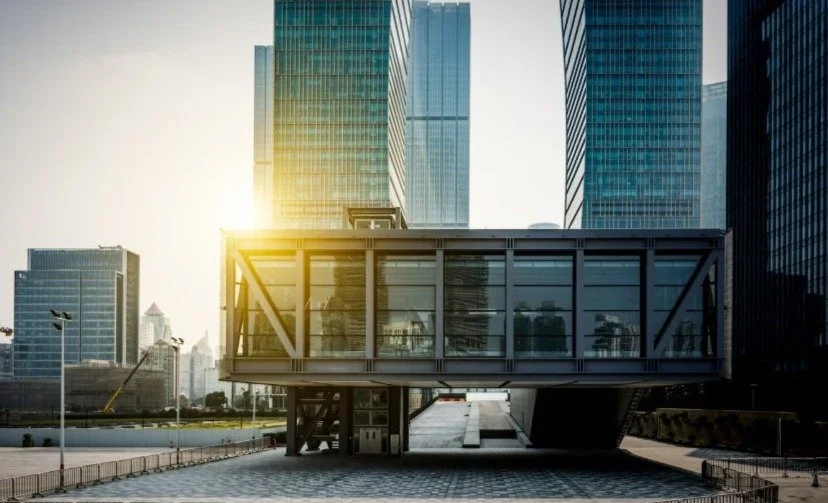The Future of Construction: Innovative Materials Transforming Urban Architecture
Urban areas have been under significant stress since the onset of the COVID-19 pandemic. People were forced to move away to more spacious areas, leaving many urban structures vacant for some time.
Nonetheless, humanity remains inherently communal, with the allure of the cultural richness of urban life indelibly drawing people back to the cities. To be in the optimal position to take advantage of this trend, keep reading as we explore some of the most innovative materials transforming urban architecture in 2025.
Prefabricated Steel Buildings
Steel has long been a common material in urban architecture, namely for its utility in structural support beams and fire resistant roofing. Fast forward to 2025, and customizable steel building packages are transforming urban architecture in numerous ways. A customized steel building kit is fabricated off site and sent to the final location for erection. It includes all building components, such as:
Columns
Rafters
Purlins
Girts
Bracing
Roof and wall sheeting
Doors
Windows
Interior wall panels
A prefab steel building offers numerous advantages in urban architecture. Because it is fabricated in a controlled factory setting, it offers greater precision of manufacturing and reduces construction error. Prefab steel buildings are erected in a fraction of the time of traditionally-constructed edifices. This helps keep urban sidewalks clear of ongoing construction traffic.
Although there is no limit to building types, prefab steel buildings are commonly seen in urban storage facilities, e-commerce fulfillment centers, and retail locations.
Self-Healing Concrete
Self-healing concrete is one of the more exciting innovations in urban architecture. It incorporates bacteria and other types of encapsulated polymers into the bed of the concrete. These features activate when cracked, releasing healing agents that repair the fissures and restore the structural integrity of the concrete. This helps nip insidious concrete damage in the bud and reduces the risk of time-consuming and costly future renovations.
Low-E Windows
Glass walls and large windows are a major trend in urban architecture. They help make the building look elegant and modern. They enhance energy efficiency by promoting natural light flow. They create a more inviting interior ambiance by leveraging biophilic principles.
Despite these advantages, buildings that feature large window areas can become unduly warm during the summer months. This can make the interior uncomfortable without kicking the A/C into overdrive. To combat this concern, it is crucial to install architectural sun shades and window treatments with urban windows. This gives building occupants greater control of how to use natural sunlight. A next-level solution is the installation of low-E glass. While more expensive than standard double-pane options, low-E glass is specially formulated to allow light transmission while blocking thermal radiation based on interior temperature, allowing the building to leverage all of the sun’s light-enhancing properties while limiting overheating concerns.
Rooftop Gardens
Rooftop gardens are recognized by the EPA as an effective means of reducing the debilitating effects of urban heat islands. Some estimates indicate that they can reduce ambient temperature by up to 20 degrees. The vegetation provides shade and absorbs sunlight that would otherwise be reflected into the ambient air.
However, rooftop gardens are more than just an energy-efficiency measure in modern urban structures. They are the source of functional exterior space for building occupants. They help provide a much-needed change of scenery and give urban dwellers the chance to get in touch with nature in new and unique ways. To ensure durability, safety, and functionality of rooftop gardens for human use, architects are using low-profile hog wire exterior handrail systems to keep the perimeter safe without encumbering views. They are also employing lightweight composite pavers for walkways and patio flooring to guarantee that rooftop vegetation is not compromised by foot traffic.
Switchable Smart Glass
The open interior is one of the prevailing design concepts in commercial office design. It enhances the energy-efficiency, ambiance, and versatility of the structure. Despite these advantages, the lack of interior partitions can create issues when more privacy is required.
Enter switchable smart glass.
This high-tech system embeds a series of microscopic LED lights between glass panels. When turned on, the illuminated lights create the transparent aspect of regular glass, offering free light flow and unencumbered sight lines inherent to the open interior concept. When switched off, the walls become opaque, creating the definition incumbent to more traditional office cubicles for enhanced privacy.
Architectural Louvers
Passive design principles are essential to urban construction. Large windows and strategic orientation to optimize natural lighting is a logical place to start. However, orientation as it pertains to prevailing wind patterns is also crucial. When paired with architectural louvers, buildings can allow natural breeze to pass through the structure while blocking out blowing rain and debris. This helps keep the structure cool and well-ventilated without overreliance on A/C. In the warmer months when natural ventilation is not enough to keep the structure cool, wall mounted ceiling fans are a more energy-efficient option for keeping the interior comfortable than increased HVAC consumption.
The Most Cutting-Edge Materials Transforming Modern Urban Spaces
As people move back to urban areas in the wake of the COVID-19 pandemic, urban buildings must be well-equipped to meet modern demands. From quickly-erected prefab steel structures to naturally-ventilating architectural louvers, consider any of the innovative materials above to create a transformative urban structure. For more of the latest trends in urban architecture, explore the resources at Off the MRKT for ideas and inspiration today!







